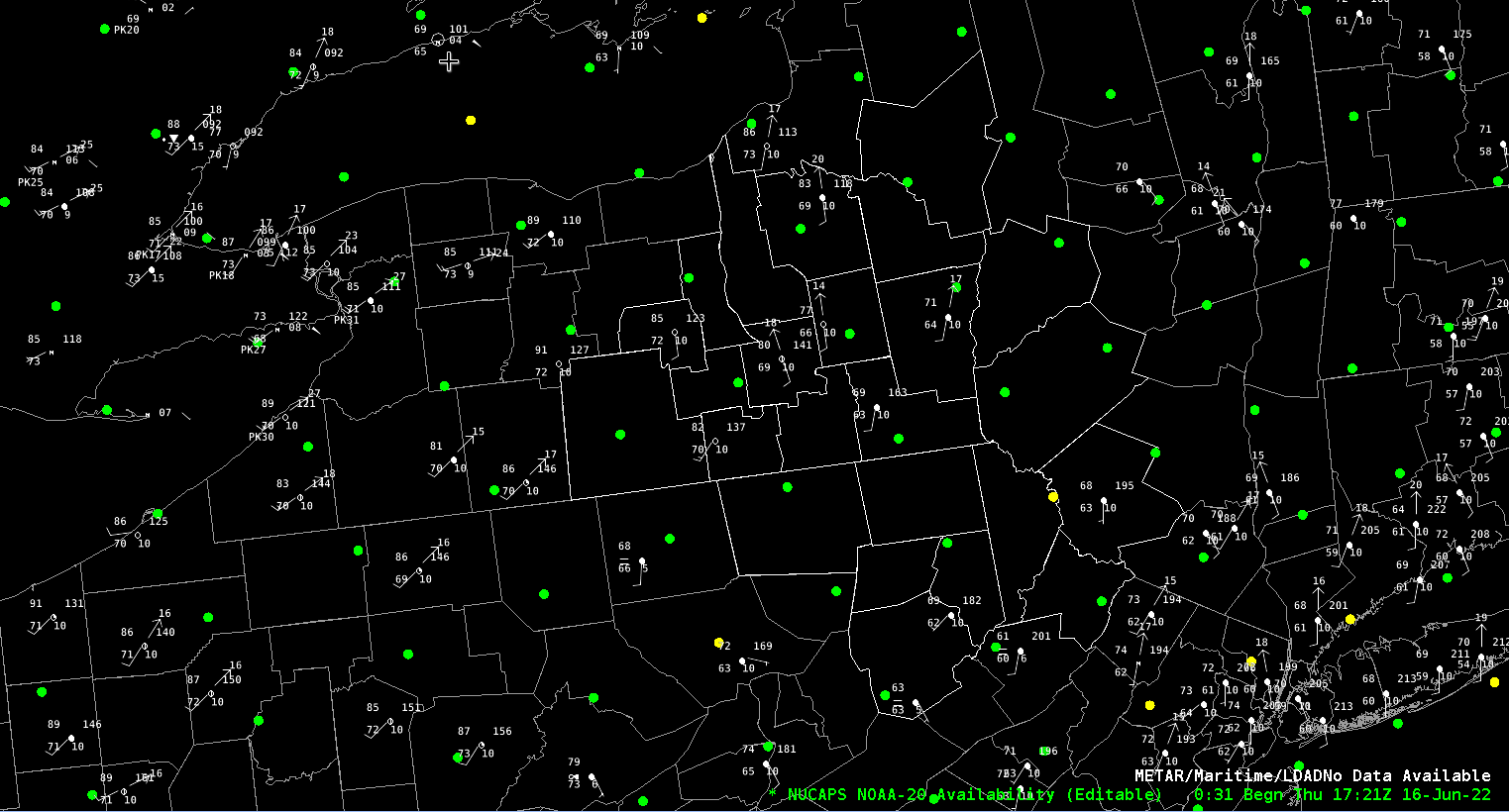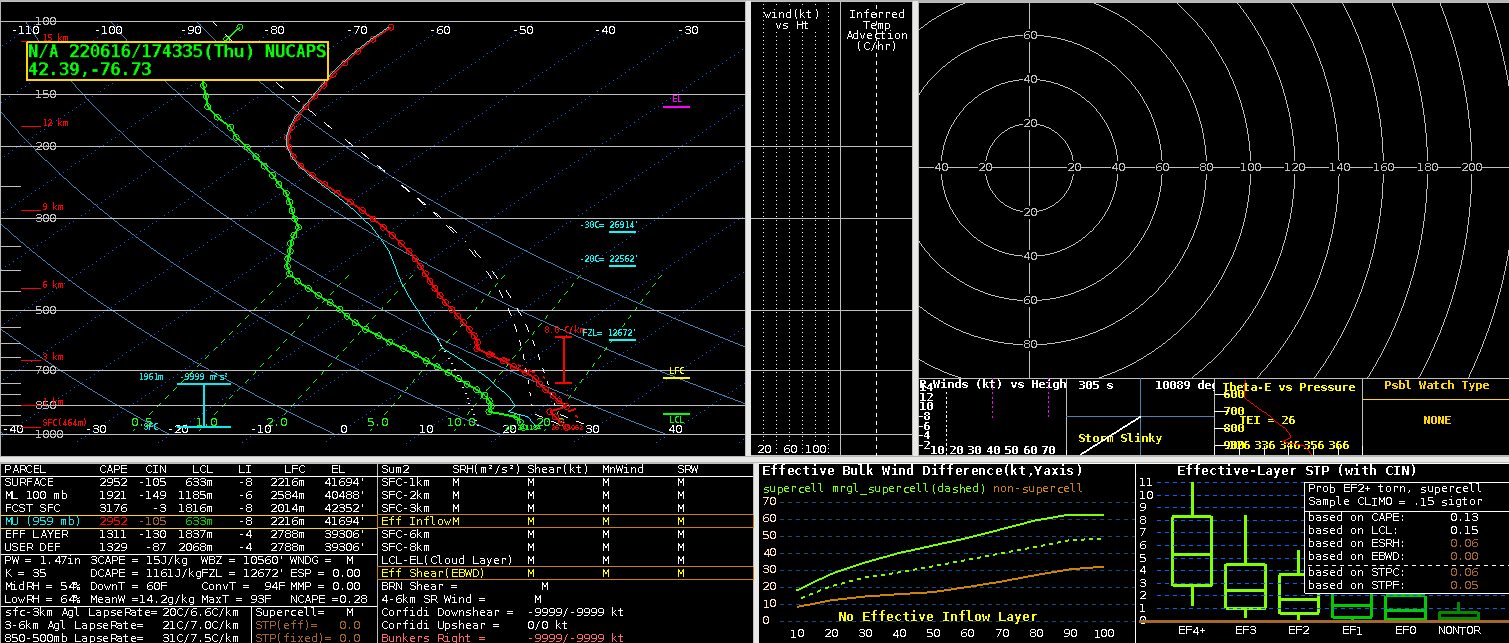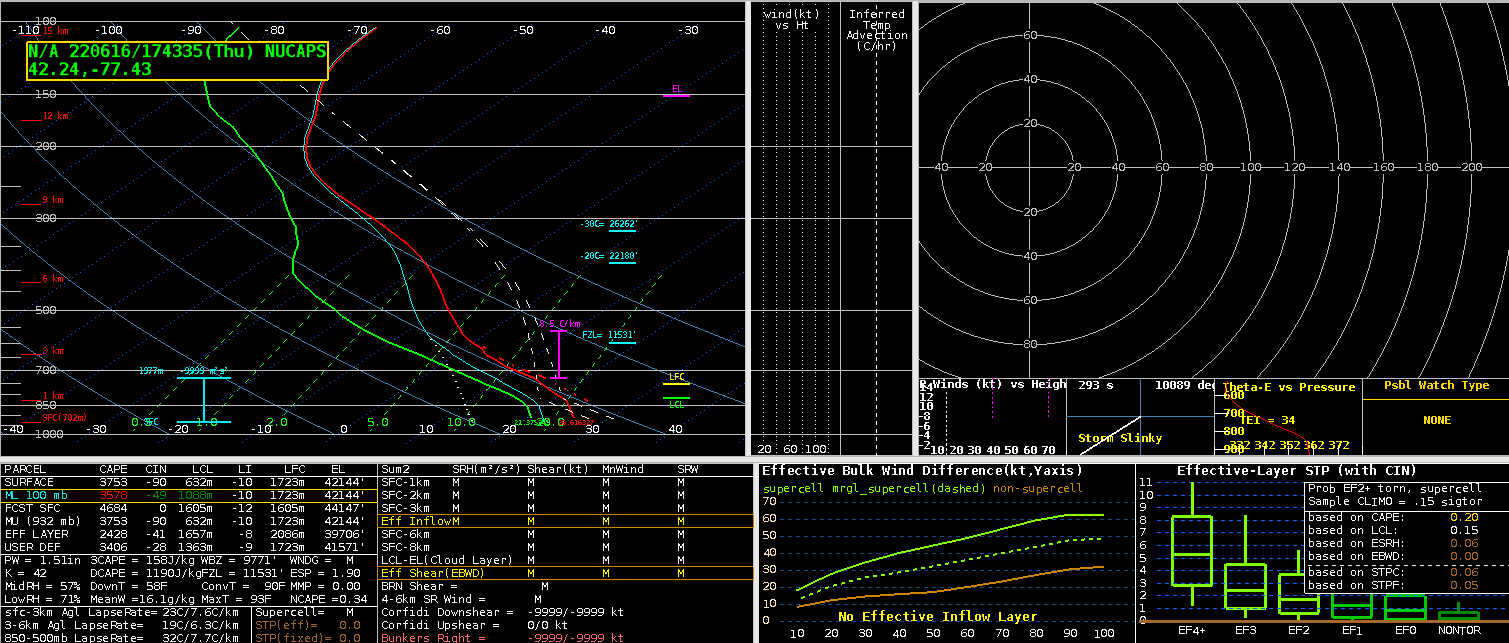So far this week, I’ve been impressed with the performance of NUCAPS and for the most part Modified NUCAPS with providing thermodynamic profile information in areas that there are overpasses. However, what would be the best setup to figure out how well NUCAPS is doing. Let’s dive in:
Today we’re located in Binghamton, NY (BGM) office with a Enhanced risk over the region. We’ve also got a NUCAPS sounding directly over the region which can help us with evaluating how well things like the SPC Mesoanalysis graphics or other models are doing:

But, visible satellite shows that there are some clouds that could be interfering with the retrievals:

After playing around a bit, it may be a good idea to load the Day Cloud Phase RGB, NUCAPS points, and surface observations into one pane:

This is useful for three reasons:
- We can see that the red in the Day Cloud Phase are mainly high clouds that are pretty thin and has enough gaps to allow for good retrievals underneath the cirrus.
- The low clouds are pretty thin except over the southern part of the CWA where some of the retrievals are yellow indicating that caution should be taken when looking at the profiles
- The surface observations can be used to give an idea of how well the surface T/Td are in the soundings which will impact all of the convective parameter calculations (especially CAPE/CIN)
So what about the soundings? Looking at the NUCAPS and Modified NUCAPS here:

We can see how things are handled by the soundings.
Here is the original NUCAPS sounding at this point:

Of note, the surface conditions in the NUCAPS sounding is too warm (85 vs 80 at the nearest ob) while the Td were fairly close 69 vs 70. How did the modified NUCAPS do?

80/70 in the sounding which is a much more likely scenario based on surface observations closest to the time of the overpass/sounding.
Why is this important? Well, all your convective parameters are based on these two conditions. MLCAPE drops by around 400 J/kg (~3900 J/kg vs ~3500 J/kg) AND CIN increases from -19 J/kg in the unmodified to -49 J/kg in the modified NUCAPS. This too lines up with what the visible satellite shows; a lack of boundary layer CU potentially meaning the CAP is holding strong.
-Pym












